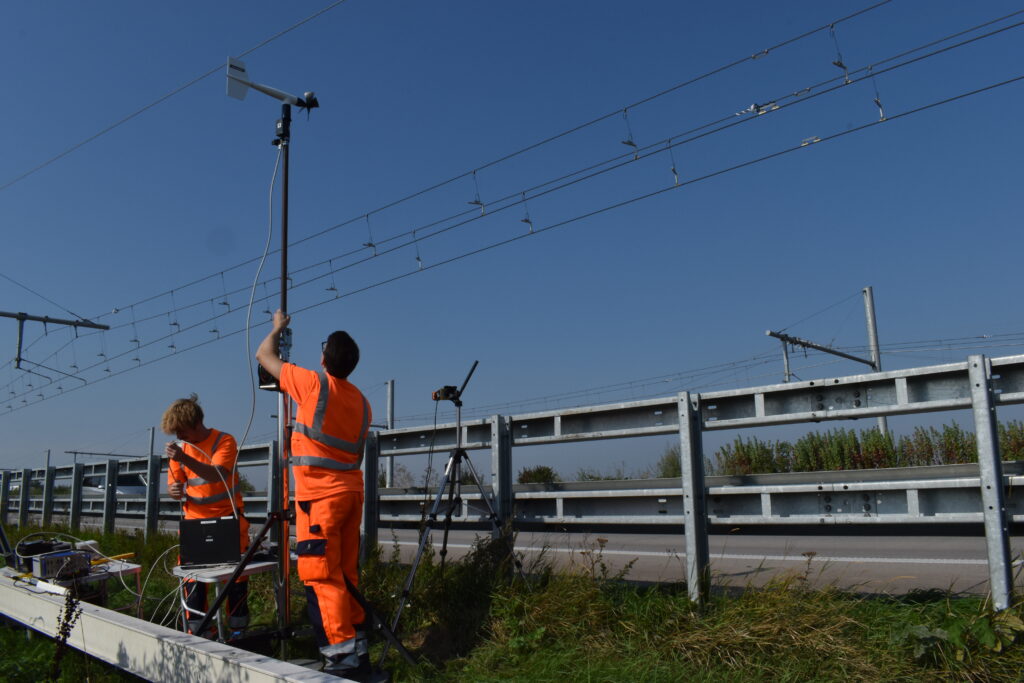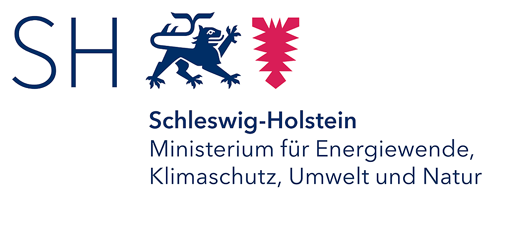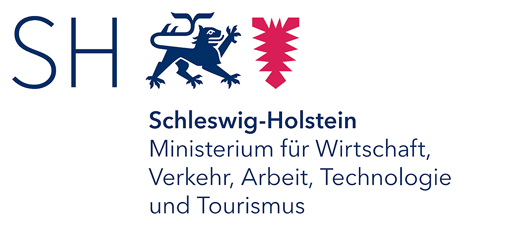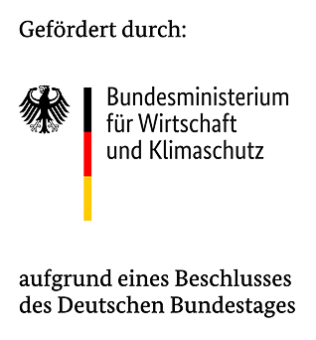Use and technical behavior of the overhead line system
Dresden University of Technology: Institute for Railway Vehicles and Railway Technology, Prof. Dr.-Ing. Arnd Stephan
Investigations into the vibration behavior are to ensure the traffic safety of the overhead contact line system. In addition to research in real operations, the development of a simulation model of the eHighway enables forecasts of essential parameters for a route expansion.
Analysis of the static and dynamic behavior of the overhead contact line system
As part of the FESH accompanying research, the Technical University of Dresden is investigating, among other things, the dynamic behavior of the overhead contact line system.
Wind output measurement
The strong winds and gusts that frequently occur, mainly due to the geographical location of the line, result in deflection of the contact wire. Furthermore, the effect of wind, which is not constant over time, can lead to vibration excitation in the linkage. However, the catenary must not leave a defined range of movement during operation in order to ensure reliable operation of the OH trucks with as uninterrupted a supply of electrical energy as possible and, in addition, to maintain minimum electrical distances between conductors and between conductors and adjacent elements as specified in the standards.
The aim of these investigations is to record and analyze the position and vibration behavior of the chain drive under various boundary conditions in real operation and thus to demonstrate compliance with the defined limit values. For this purpose, a measuring system developed and tested by the TU Dresden is used to optically record the movement of the contact wires and suspension cables during operation with simultaneous local wind measurement.
Operation and load flow simulation of the eHighway system
A simulation model for the eHighway as an electric transport system was developed by the Chair of Electric Trains using the FESH line as an example and validated against real measured data. In order to be able to represent the operation of an eHighway system in a detailed and practical manner, the subsystems vehicle, route, electrical infrastructure and (driving) operation as well as their dynamic interactions shown in Figure 2 are simulated in the model. The simulation principle is based on a driving operation and drive simulation with combined electrical network calculation. The validation of the model is carried out against real measurement data recorded by the vehicles in field tests and has already shown very
good agreements between simulation results and real measurements.
The simulation model can be extended to any route and can be used as a technical decision-making basis for a route expansion or “roll-out” of the eHighway. With the help of the model, forecasts of electrical and operational parameters (energy and power demand, current load, voltage drops, etc.) are made possible for any operating scenarios. Furthermore, studies on system design and technical feasibility as well as considerations on ranges of on-board energy storage systems can be carried out.
Prof. Dr.-Ing. Arnd Stephan im Interview
Professor Stephan hat den Lehrstuhl für elektrische Bahnen an der Technischen Universität Dresden inne und geht im Rahmen der Begleitforschung von FESH Fragestellungen im Bereich Anlagentechnik nach. Im Interview gibt er einen Überblick über sein Forschungsfeld sowie die Vorzüge und Herausforderungen der Oberleitungs-Technologie.
„Wir wollen, dass der Verkehr grüner und besser wird und da ist der elektrische Verkehr mit den verschiedenen Lösungen, die sich heute anbieten, natürlich im Zentrum der Betrachtung.“, erklärt Professor Stephan.





